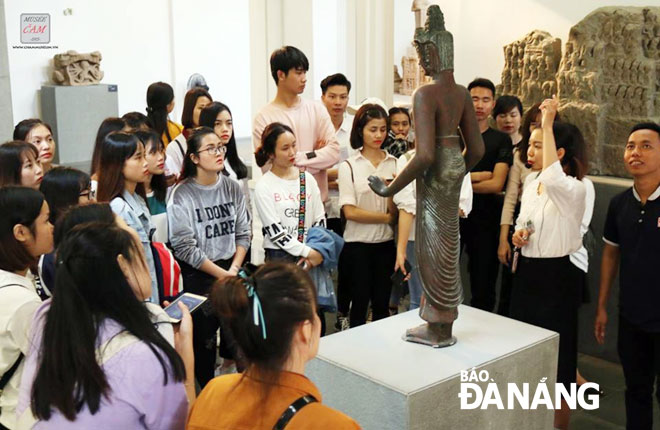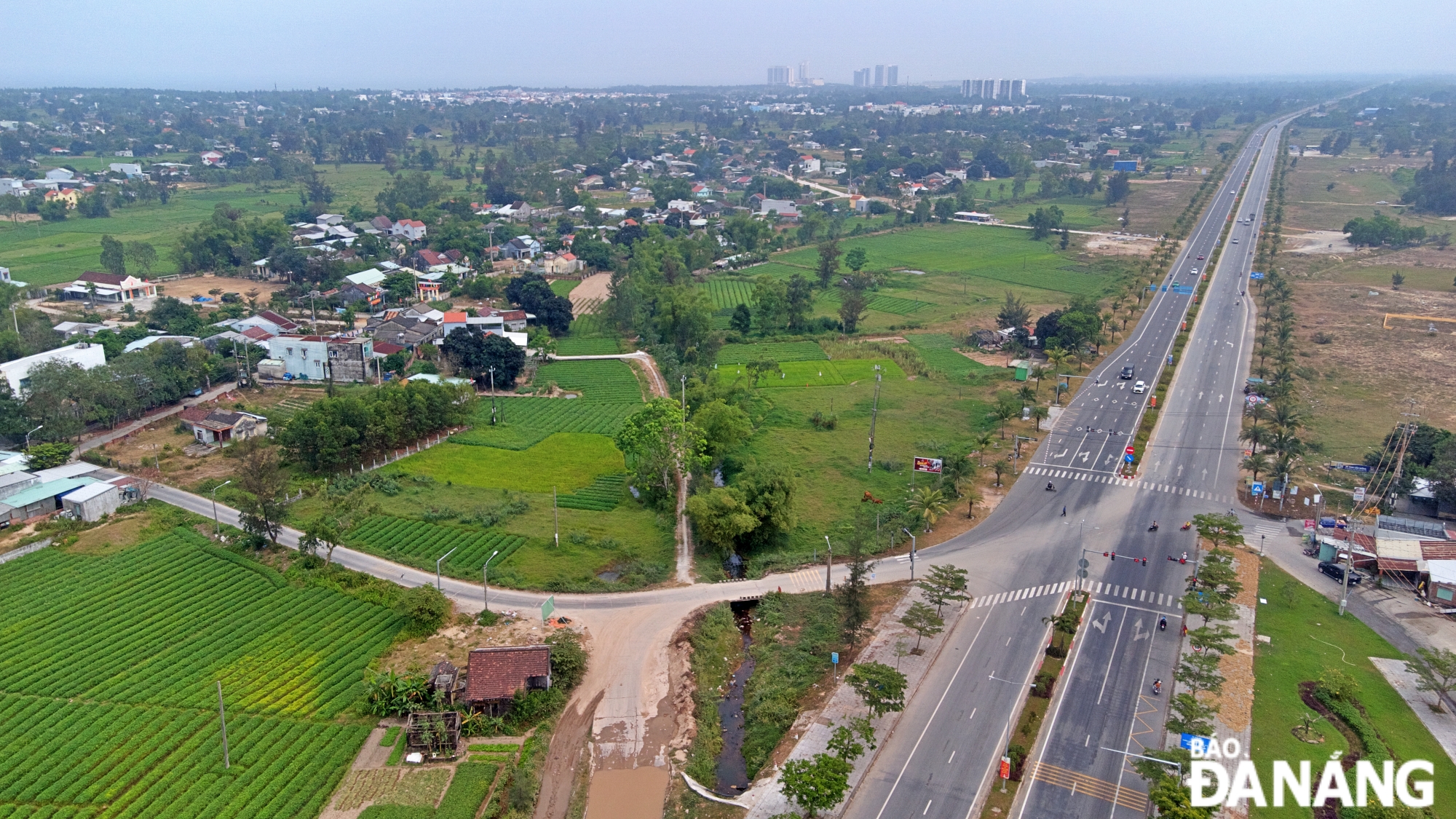Museum of Cham Sculpture proves highly inviting
The Da Nang Museum of Cham Sculpture, located by the Han River in downtown Da Nang, has confirmed its firm stature as a place to preserve and promote unique cultural heritage in the city, and in Viet Nam as a whole. This is a one of the city’s best places to visit thanks to its great historical and cultural values, and its unique architectural styles.
 |
| The Da Nang Museum of Cham Sculpture usually receives a large number of visitors, many of whom are school pupils and tertiary students. |
The place is thought to have been one of the first 3 museums to be established in Viet Nam, and it has become one of the world's most famous collections of Cham artifacts. The exhibits all showcase the cultural exchanges and development of Asian countries during medieval times, and they represent the pinnacle of the Champa civilisation.
To celebrate 100 years since the museum opened for the first time, a photo exhibition space has recently opened at the museum.
On display are a total of 250 time-honoured photos showcasing the history and development of the museum, hereby bringing visitors back to the past when French people brought the first artifacts to Tourane (modern Da Nang) prior to the building of the museum.
In particular, through these displayed photos, the visitors have a deeper insight into the original structure of the museum, its galleries and artifact storehouses, and especially how to transport and preserve artifacts during 1916 – 1935, and the process of renovation and expansion of the museum during 1935 - 1936, 2002 - 2009, and 2016 – 2017 periods.
The first structure in what is now the Da Nang Museum of Cham Sculpture was built in 1915. The museum opened its doors to the public in 1919 but many Cham artifacts had been collected and brought to the site over the preceding 20 years. The collection was begun by French archaeologists and experts from the L’ecole Francaise d’Extreme Orient (the Far East Archaeological Research Institute) in Ha Noi.
Currently, the museum houses a total of more than 2,000 large and small-sized artifacts. In particular, on display are 4 national treasures, namely Tra Kieu, My Son E1 and Dong Duong pedestals,and the statue of Tara/Avalokiteshvara.
In order to diversify, and enhance the quality of guide services, recently, the museum has introduced its visitors to scientific and technical apps, especially 3D holographic presentation system. Through this device, visitors can observe artifacts with their naked eyes and hear specific explanations about artifacts.
Besides, a multi-lingual audio guide app has peen put into use at the museum at the museum. Accordingly, visitors can access audio recordings in Vietnamese, English, and French to gain an insight into the history, origin, place names, and information about available artifacts on display here.
Ho Tan Tuan, the museum’s Director, said, through the ups and downs of the history and the passage of time, the cultural and archeological values of the museum has still proved very attractive to locals and tourists. The museum’s staff have always made ceaseless efforts to preserve and promote the site’s great value so that this venue will keep its form stature as a cultural symbol in which residents take deep pride.








